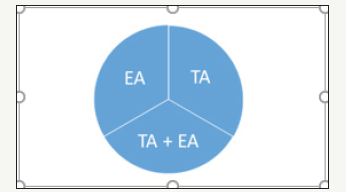- Submissions

Full Text
Advancements in Bioequivalence & Bioavailability
Decision-Making Model Proposed in Use of Extra/ A-shi Acupoints with Traditional Acupoints
Tong Zheng Hong*
Department of Health Sciences, Taiwan
*Corresponding author: Tong Zheng Hong, Department of Health Sciences, Taiwan
Submission: November 12, 2018;Published: November 27, 2018

ISSN 2640-9275 Volume2 Issue2
Abstract
Pattern identification is derived from the Yin-Yang theory, which plays a key to the successful treatment outcomes. However, it is hard for acupuncturists to make a right choice when it comes to use of extra/A-shi acupoints alone, traditional acupoints only, or the combination of these acupoints in clinic. This model proposed is based on the Yin-Yang and conducted with palpation, which may make patients feel better in diagnosis and treatment.
Keywords: Yin-Yang; The five element; Pattern identification
Introduction
Traditional Chinese Medicine (TCM), which originated in China with the unique philosophy observing the nature and seeing humans and the nature, has been accepted and viewed as the mainstream medicine over past 2000 years. In addition to the Chines herbs, acupuncture is surely the modality commonly used by Chinese [1].
The efficacy of acupuncture for relieving pain has been verified with scientific studies, which enables acupuncture to gain more and more popularity and acceptance in the past years and evolve into one of the most used forms of the complementary or the integrative medicine interventions in the West [1]. Historical developments of acupoints indicate that an acupoint is discovered accidently in the daily life with the specific indications and actions [2].
Acupoints are first discovered as A-shi acupoints, accepted gradually with analysis of indications and actions, and finally included into the meridians. Acupoints used clinically and academically at present are generally divided into acupoints on the traditional fourteen meridians, acupoints not located at the traditional fourteen meridians, such as A-shi acupoints, and extra acupoints [3]. How to make a right decision in selecting acupoint protocols for clinical use is the critical issue.
Glance at acupoint selection options
A pattern is the essence of TCM that refers to the process of identifying the disharmony underline all of the clinical manifestations. In identifying patterns, an acupuncturist needs to follow the typical way which looks for relationships between humans and nature, and the Zang-Fu organs balance.
This three-acupoint-selection protocol in Figure 1 shows that acupuncturist in practice may face the decision-making issue in terms of using the traditional acupoints only, the extra acupoints only, or the combination of both traditional and extra acupoints. It is beyond doubt that an acupuncturist must choose one out of these choices when it comes to TCM theories of Yin-Yang, the Five Elements, and the historical development of acupoints.
Figure 1:Three-acupoint-selection protocol.
Note: TA for traditional acupoints on the meridians; EA for extra and A-shi acupoints.

TCM focuses on Ying-Yang, Qi, and Blood, which are the four pillars for the explanations of the etiology. A disease is believed to be result of the Yin-Yang imbalance shown in Figure 2, which highlights the importance of the Yin-Yang theory acupuncturists need to consider. Unfortunately, the Yin-Yang and the Five Element theories cannot apply to extra acupoints only because they are included in the traditional fourteen meridians [2].
Figure 2:Characteristics of Yin-Yang.

In other words, the possible and feasible model seems to be required for clinical use of either traditional acupoints or extra and A-shi acupoints.
Model proposed
Acupuncturists in practice need to follow the patter identification that plays a key to the successful and expected outcomes [4]. Identifying patterns requires the four diagnosis skills, Looking, Smelling, Asking, and Feeling. The historical developments of A-shi acupoints defined as responding acupoints suggest that we need to consider this feature into the model, even though the Yin- Yang theory cannot apply to Ashi and extra acupoints [3].
It is suggested that an acupuncturist need to bear the golden rule Less needling for best outcomes in mind for patients to feel uncomfortable [3]. The model in Figure 3 is proposed based on Yin-Yang identification with the application of palpation. Palpation is part of the Feeling skill included for the noninvasive feature to provide mobile information with patients’ immediate reactions for the verification of diagnosis and can serve as the feedback for acupuncturists to reconsider and recheck the diagnosis [5,6].
Figure 3:Decision-making model in use of Extra/A-shi acupoints with traditional acupoints.

Conclusion
In order not to make patients nervous and decrease the pain, the decision-making seems to be a concern for acupuncturists. In this model, four mobile skills are conducted throughout the diagnosis and treatment for the verification of diagnosis. Palpation is not invasive that can play an essential role to gather the enough information for the clinical practice. However, revision of this model is needed in the future with the clinical experience, though it is effective to some extent up to now.
References
- Hong TZ (2017) Revisiting extra acupoints: Past, present and future. J Network Med Target Ther 1(1).
- Hong, TZ (2017) Exploring a new extra point for sub-acute cough: A Case Report. Scholar’s Press, Germany.
- Hong TZ (2017) Revisiting extra acupoints: Past, present and future. J Network Med Target Ther 1(1).
- Hong TZ (2018) Notes for clinical use of extra acupoints. J Complement Med Alt Healthcare 8(1).
- Wang JY, Robertson J (2007) Channel palpation. J Chinese Med, p. 83.
- Langevin HM, Yandow JA (2002) Relationship of acupuncture points and meridians to connective tissue planes. Anat Rec 15 269(6): 257-265.
© 2018 Tong Zheng Hong. This is an open access article distributed under the terms of the Creative Commons Attribution License , which permits unrestricted use, distribution, and build upon your work non-commercially.
 a Creative Commons Attribution 4.0 International License. Based on a work at www.crimsonpublishers.com.
Best viewed in
a Creative Commons Attribution 4.0 International License. Based on a work at www.crimsonpublishers.com.
Best viewed in 







.jpg)






























 Editorial Board Registrations
Editorial Board Registrations Submit your Article
Submit your Article Refer a Friend
Refer a Friend Advertise With Us
Advertise With Us
.jpg)






.jpg)














.bmp)
.jpg)
.png)
.jpg)










.jpg)






.png)

.png)



.png)






